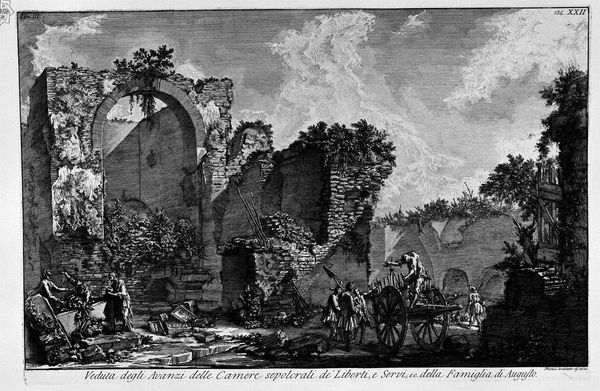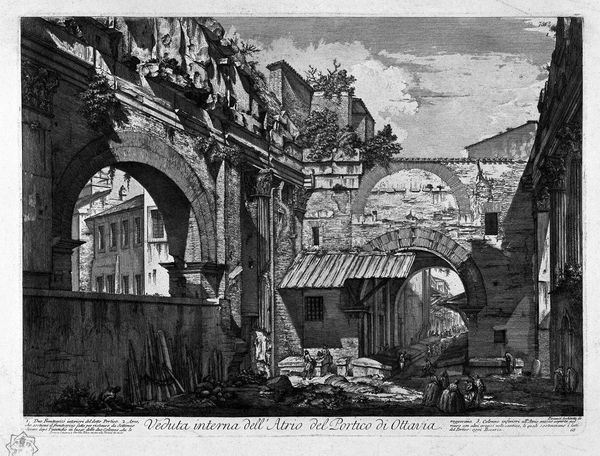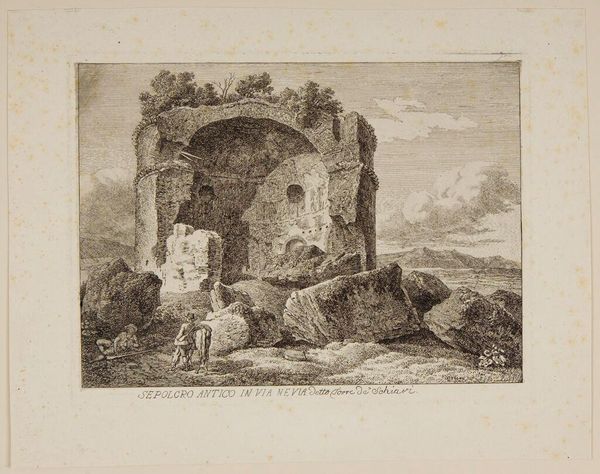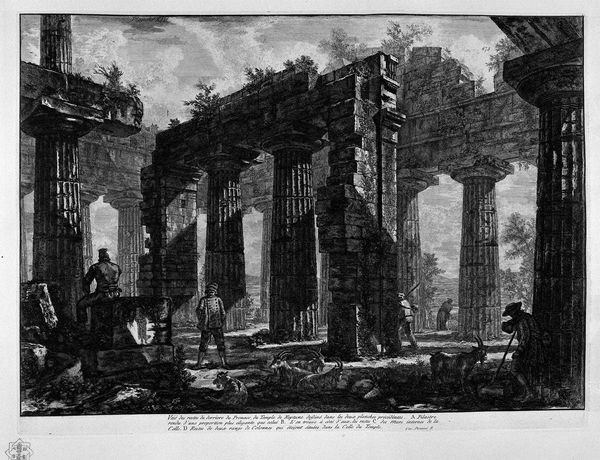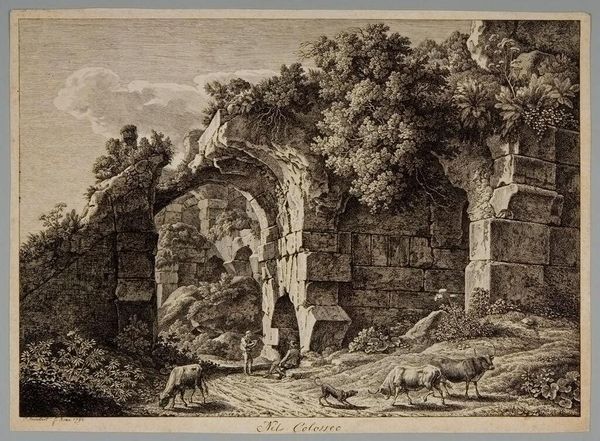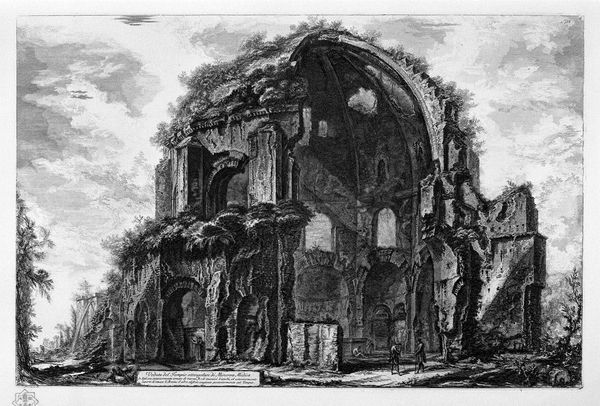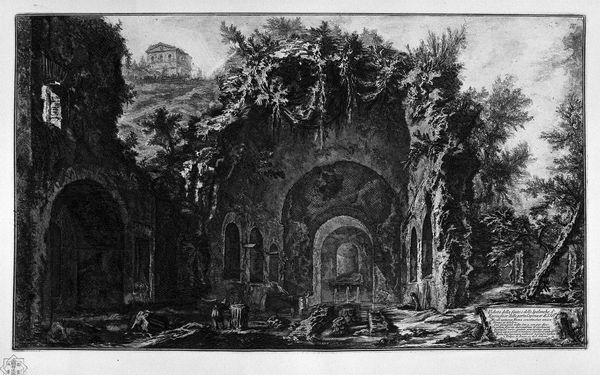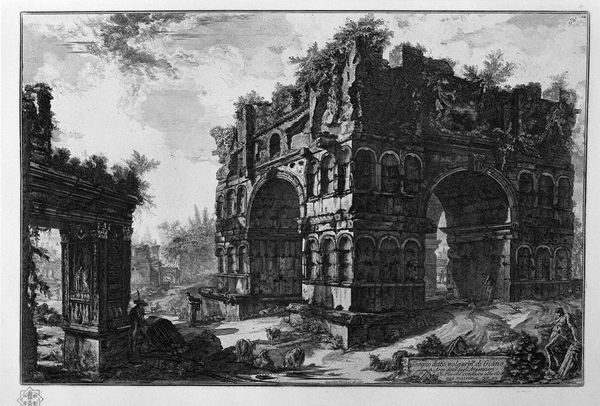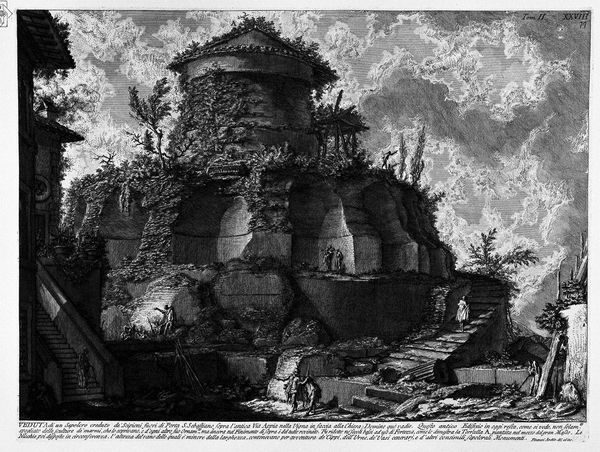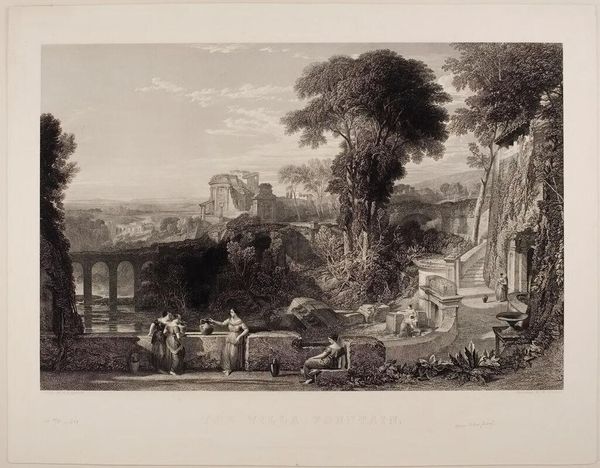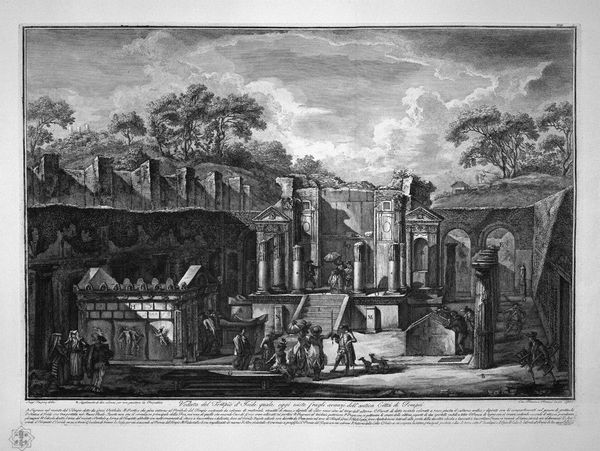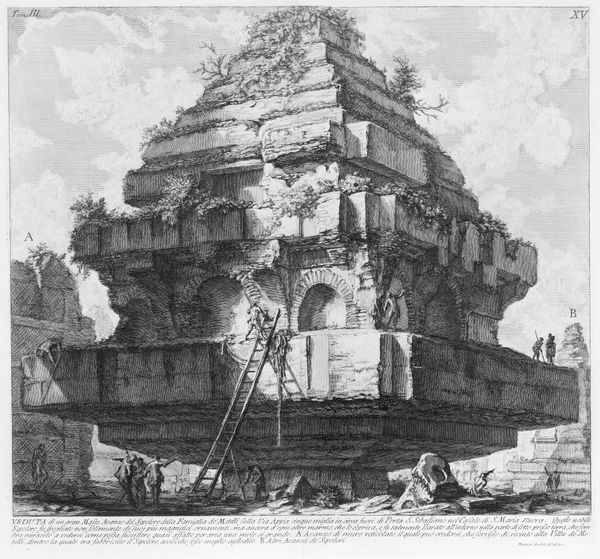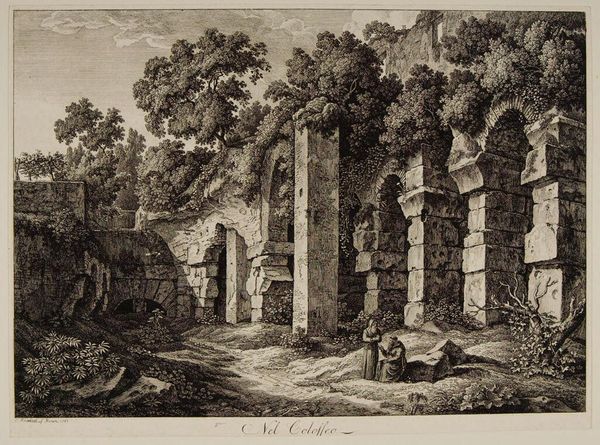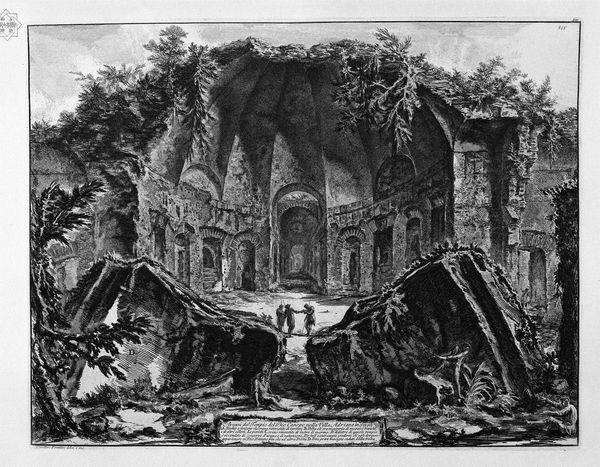
The Roman antiquities, t. 2, Plate LX. A view of the magnificent tomb near the remains of the factory in Torre de `Schiavi outside Porta Maggiore.
0:00
0:00
drawing, print, etching, architecture
#
drawing
#
baroque
# print
#
etching
#
sculpture
#
landscape
#
perspective
#
form
#
romanesque
#
black and white theme
#
column
#
black and white
#
arch
#
line
#
cityscape
#
history-painting
#
architecture
#
realism
Copyright: Public domain
Curator: Here we have Giovanni Battista Piranesi’s "The Roman antiquities, t. 2, Plate LX. A view of the magnificent tomb near the remains of the factory in Torre de `Schiavi outside Porta Maggiore,” an etching and print. What are your initial thoughts? Editor: Immediately, I’m struck by the stark contrast and monumental scale. The ruins evoke a powerful sense of history and decay. The dense rendering feels so real, I can feel the weight of the stones and see the labor involved. Curator: It's fascinating how Piranesi presents these Roman ruins. He's not just documenting them; he's constructing a visual narrative around the remnants of a once-great civilization, isn't he? Editor: Precisely. Those archways, those massive columns—they are both beautiful and imposing, even in their broken state. Notice the deliberate textural layering; how he uses hatching and cross-hatching to build up the density of tone in some sections while leaving other surfaces pristine, as if inviting viewers to imagine both the initial splendor and subsequent deconstruction of such material power and cultural authority. Curator: He masterfully uses classical imagery—the arches, the columns, all referencing the Roman Empire. But it's not just a simple glorification, is it? There's an underlying sense of melancholic grandeur. Those elements almost serve as warnings and reflections. Editor: Absolutely. I see those same symbols speaking across millennia. Even though fragmented, they are persistent visual language that shaped architectural and political ideologies over time. He subtly, in that act, elevates craft to the status of fine art by documenting what time has rendered. Curator: His perspective choices heighten that drama too. It creates a dialogue between human-made structures and how humans interact with them over time. Editor: I think this artwork does a beautiful job highlighting how ruins invite considerations of time, decay, and labor, and how deeply intertwined making and unmaking processes are. Curator: Indeed. Examining those ruined stones tells a story far more complex than simple nostalgia for the past. Thank you, these fresh insights illuminate some of this powerful image’s cultural roots. Editor: Thank you. Exploring the ways a culture manifests and remanifests over long periods in material remains—such as classical symbology in ruins—deepens appreciation for continuities in visual culture.
Comments
No comments
Be the first to comment and join the conversation on the ultimate creative platform.
